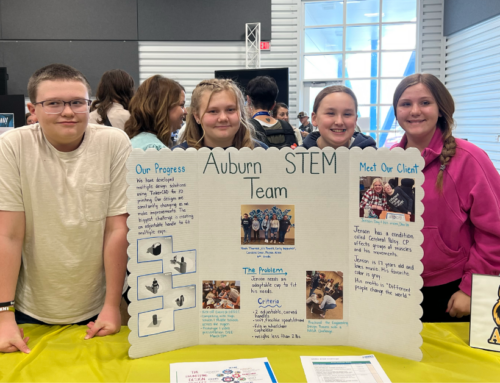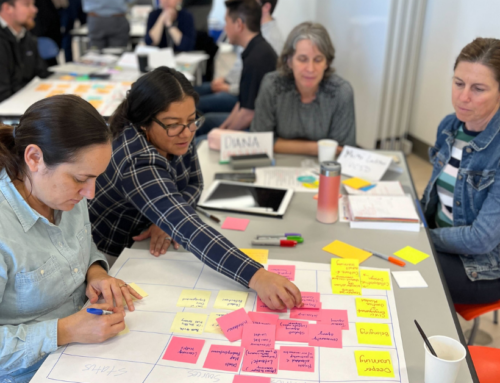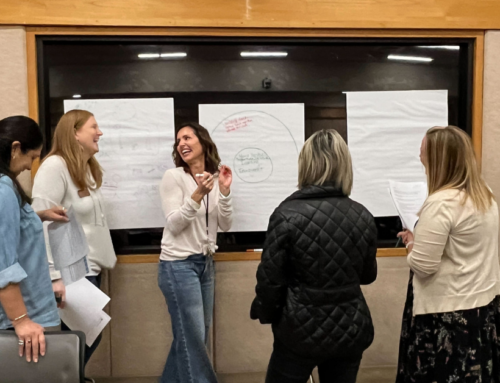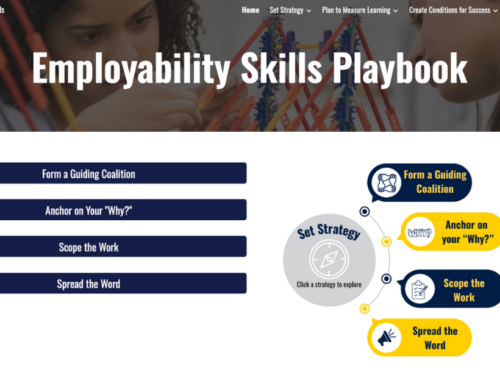
In a virtual learning context, many focus their attention on fostering teacher-student connections, which are extremely valuable and important. However, in addition to teacher and student connection, peer collaboration is important for learning and social-emotional well-being. As I noted in a recent article on how to align practices to the learning sciences, “collaboration and social interaction can be powerful learning experiences because they encourage deeper processing and engage the ‘social brain.” This is especially important when students are learning virtually.
While it might feel like you have more control by asking students to watch a video, or listen to you teach for an hour, I believe that creating the community of learners to connect and collaborate with one another will be what keeps learners coming to class and what will sustain more powerful learning over time. People learn from one another, through observation, imitation, and modeling. We learn how to act and react to situations from others. When learning environments are organized to facilitate positive interactions and are designed to foster connection and collaboration, the community benefits from the collective expertise. I love this graphic from EducationRichSaw.com that captures the difference between teaching and learning.

6 Ideas to Connect Learners Virtually
One of my students recently shared that connecting and collaborating with others is often the best part of virtual classes given that moving online removes the hallway conversations and connections built outside of classroom experiences. Collaboration and connection are vital to our academic success as well as our social-emotional well being. They can occur more naturally in our face-to-face environments, which is why we have to be more intentional about creating the conditions for this to happen when we are remote. Here are some ideas for connecting learners virtually.
1. Discussion Groups
In most of the online collaboration tools (like Zoom), you can create breakout groups that allow for small group discussions. One simple strategy is to share a text, a quote, or provide a question to discuss and provide a brief overview and instruction to the whole class and then send them to breakout groups to discuss. The teacher can pop into each breakout room and create a google doc or some shared discussion board for students to make their thinking visible. It is much like a “turn and talk” in the classroom and allows for more voices to be shared and therefore more thinking to happen.
You can also create breakout rooms for small group check-ins on a personal level and just let kids talk to each other (adults like this too in Professional Learning).
2. Learning Circles
Much like discussion groups, Learning Circles create the space for a small group to come together and are often more effective and engaging than whole group instruction. However, what makes Learning Circles unique is that they can be structured in a way that allows learners to explore a topic together. This is a great way to spend time learning in community with people who have a similar topic or problem to solve.
This collaboration can happen with or without zoom or computers for each student. You could connect via phone, FaceTime, or other platforms but in virtual learning circles, teachers can provide the prompt which could be a poem, an article, a book, or the topic could be generated by the learning circle. Once formed the group of 4-6 students finds time to collaborate on a regular basis in a way that works for them. The learning circle can also be a group that is responsible for one another and check in on each other throughout the week.
3. Peer Feedback
One practical way to connect learners and make the work more manageable for teachers is to provide opportunities for students to give feedback to one another. My friend shared that her daughter was on the phone, FaceTiming with friends to collaborate and give each other feedback. This is as important for their academic success as it is for their emotional connection. While students might do this on their own, it will provide more opportunities for connection if you can facilitate it as the teachers. You know the rule, ‘ask 3 before me?’ Remind students to ask each other for help before they come to you or set up a time for peers to give feedback to one another during class or throughout the week.
4. Book Study
I have been running a book study for Learner-Centered Innovation and one of the best parts has been the weekly conversations with educators around the country. Each week we meet to discuss parts of the book and how it relates to our current reality. We share strategies, resources, ideas, and have gotten to know each other as we have come together over a sustained period of time.
Also, in the class I am teaching we picked 4 books that related to a central theme, change leadership, and each person picked the book they wanted to read. Each group reads, discusses and shares their ideas each week. This is a great way to motivate students to read and provide structured ways to connect and discuss.
5. “I Wonder” Board
One of my favorite ideas I have seen in a classroom is an I Wonder board where students post questions that they are interested in exploring. Why not host a virtual I wonder board and use Flipgrid or discussion board to share questions? Students could share what they know or research and comment. If you create a space for kids to engage in topics that are interesting to them and share what they know, they will be much more invested in researching and sharing what they find.
6. Learning Exhibition
Just like in the classroom, a public product and authentic audience to share what you have done are very motivating to students. My daughter was less than motivated last week to do her project, but when she saw what her classmates were working on and knew that she had to be ready to share her work at noon in a class meeting she pulled it all together. In addition, she was inspired by what others shared, which means next week she will likely be much more motivated to get her work completed. When you create a time or place for students to share their learning and do something for an authentic audience instead of just turning in work to you as the teacher, the task becomes much more meaningful.
Remember we are all learning and there is no perfect way to do this. I love hearing feedback on how these strategies work for you and other strategies that you are using to build community among your students and with one another to support your own growth and emotional health.




